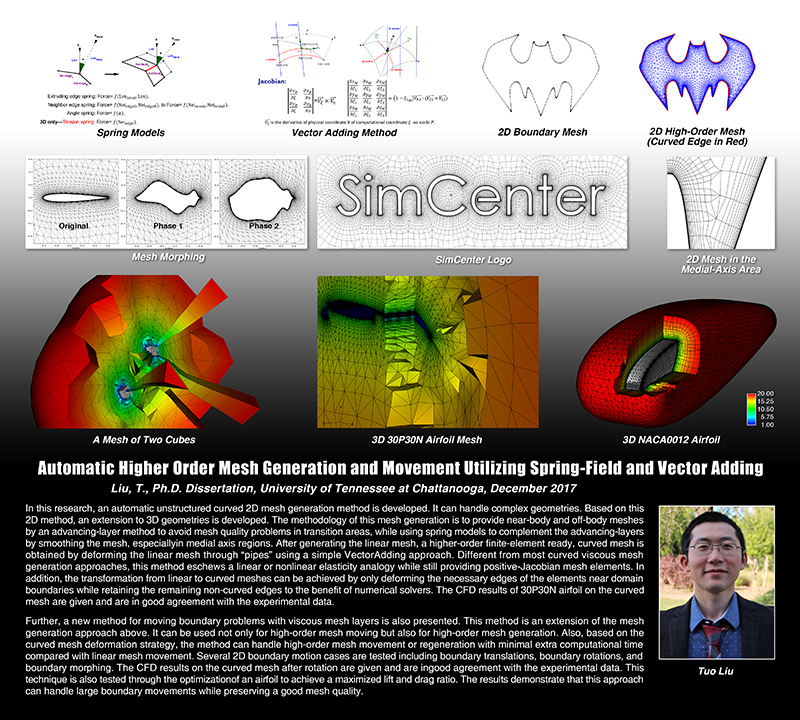Tuo Liu
Automatic higher order mesh generation and movement utilizing spring-field and vector-adding
A Dissertation Presented for the Doctor of Philosophy in Computational Engineering, The University of Tennessee at Chattanooga
Tuo Liu, December 2017
Abstract:
In this research, an automatic unstructured curved 2D mesh generation method is developed. It can handle complex geometries. Based on this 2D method, an extension to 3D geometries is developed. The methodology of this mesh generation is to provide near-body and off-body meshes by an advancing-layer method to avoid mesh quality problems in transition areas, while using spring models to complement the advancing-layers by smoothing the mesh, especially in medial axis regions. After generating the linear mesh, a higher-order finite-element ready, curved mesh is obtained by deforming the linear mesh through “pipes” using a simple VectorAdding approach. Different from most curved viscous mesh generation approaches, this method eschews a linear or nonlinear elasticity analogy while still providing positive-Jacobian mesh elements. In addition, the transformation from linear to curved meshes can be achieved by only deforming the necessary edges of the elements near domain boundaries while retaining the remaining non-curved edges to the benefit of numerical solvers. The CFD results of 30P30N airfoil on the curved mesh are given and are in good agreement with the experimental data.
Further, a new method for moving boundary problems with viscous mesh layers is also presented. This method is an extension of the mesh generation approach above. It can be used not only for high-order mesh moving but also for high-order mesh generation. Also, based on the curved mesh deformation strategy, the method can handle high-order mesh movement or regeneration with minimal extra computational time compared with linear mesh movement. Several 2D boundary motion cases are tested including boundary translations, boundary rotations, and boundary morphing. The CFD results on the curved mesh after rotation are given and are in good agreement with the experimental data. This technique is also tested through the optimization of an airfoil to achieve a maximized lift and drag ratio. The results demonstrate that this approach can handle large boundary movements while preserving a good mesh quality.
Click here to access a copy of Tuo's dissertation.
